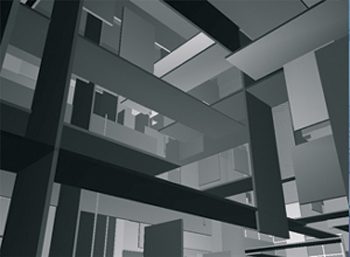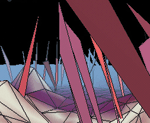updated October 04, 2008
Navigation Organisation Narrative

project by Matilda Eriksson, Milo Lavén and Hjalmar Mann
NON
The non course was set in two phases. During the first three weeks all 70 students worked on the same topic, while divided into text seminar groups in the three NON tracks, Navigation, Organisation and Narrative. During phase two the students selected to continue the pursuit of one of the tracks, either individually or in design teams.
During the two phases of the NON course, students were encouraged to work in different constellations, to explore new topics and transform ideas between different media. Although the second phase was divided into three different tracks, Navigation, Organisation and the Narrative, with different tutors and agendas, the projects were finally reassembled under ten different topics.
Different input was given throughout the 6 weeks, including numerous lectures and presentations, text seminars and intense workshops. All participating teachers brought in their own interests to provide a rich context for the overall course, and students were given access to all agendas, while choosing their own line of progress.
navigation outline
Consider work that operates in three or
more spaces simultaneously, some narrative, some metaphorical. The
research would embark on an architecture of shifting velocity and
vector; they are objects that are reflexive, and inhabit vessels
and spaces that are fast, slow, slippery or simply suddenly absent,
but always fluid. We know that architecture is no longer a cold
machine on a brutal planet. It's the little things that drive us
wild: small movements, tiny recalibrations, minute metricutations,
digital differentiations and meddlesome menisci these and many other
extreme phenomena silently undermine the prison of a naive reality;
a naive reality in which other architects continue to plonk a plodding
architecture for a preposterous posterity.
Shaun Murray was responsible for the navigation track.

Joel Hedgren
organisation outline
The isolated structure in different medias
carries information to be used as guidance, interaction and control.
Systems are always changing, barriers are formed, gates are opened
and closed. The unexpected can happen. The planned does not take
place. The Model becomes the probing platform for the unknown, the
simulation becomes a tool. The adaptive landscape is put to the
test. Through studies of interactive scenarioes on the borderline
between Models and Tools, the potential in the generated was investigated,
keeping in mind the importance of the underlying order, while being
aware of the difference between the extarnal overview and the internal
experience.
Jonas Runberger, Daniel Norell and Pablo Miranda were responsible
for the organisation track.

Ulrika Bengtsson, Maria Sigeman and Jeanette Sevegran
narrative outline
The Narrative is the oldest known method
of bending space and mastering time. Language is a virus and we
are contamined. Communication is a drug and we are addicted. The
voice, the gesture, the game, the sign, the trace, the wall and
the system are the vehicles for the narrative. Within this segment
we handle the narrative as the engine of the project, disassemble
its parts and learn about maintenance of this vehicle and manouvering
ways of communication in harsh conditions (speechless, reckless,
in darkness, in competition with other media, digitally). A passionated
interface should form between the driver and the vehicle. The story
could be the shortest way between idea and culture, between thought
and mass movement, between knowledge and memory. It takes time and
takes place, and may be passed down generations with only a drop
of fuel in the tank.
Minna Henttu and Malin Zimm were responsible for the narrative track.
general
Jonas Runberger was coordinator and administrator
of the overall course, which was run within the Communications department
of the School of Architecture, the Royal Institute of Technology,
with Peter Ullstad as examinator. A team of assistants supported
the course with technical expertise: Karin Arnberg, Roger Eriksson,
Henrik Hansen, Fabian Lindén and Ulrika Wachtmeister
More information and samples of student projects can be found at:
www.hypersketch.com/non